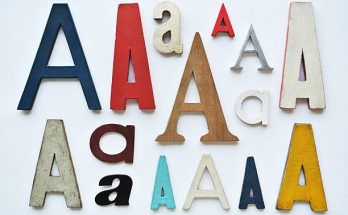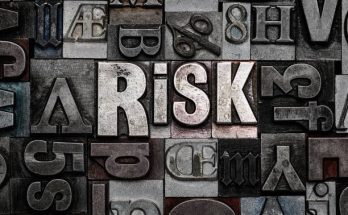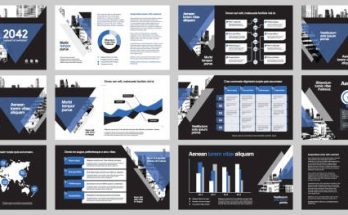How Typography Impacts Your Audience
Typography is crucial in modern society, key to issues of text as image at least as much as words and information. The type of fonts we use are emotional appeals, perception appeals, and how the reader gets involved in the text and trusts the information that is available. We will also take a detailed look at the psychology behind fonts and reveal how typography impacts your audience, but most importantly, how fonts shape not only what so many of us think but also how we feel.
Typography psychology, a discussion
Typography is not a question of choosing an awesome font, as a lot of people think. The font style, size, space, and alignment are other factors that give the intended message out to the recipients. Typography plays an important role when considering readability, user engagement, as well as overall feelings towards a brand when producing content for a blog, business website, or even a social media post.
In the area of design psychology, it has been found that differential fonts even lead to very dissimilar responses from the users. Therefore, if the aim is to create a change that elicits some form of action from the audience or clients and cultivates their trust and confidence, how typography impacts your audience is critical.
Why Typography Matters
This paper aims to verify the perception that typography affects the readability and consequently the comprehension of texts. From the research, it has been established that when users are given texts that are easy to comprehend, they tend to have faith in the content of the message. This is why serif fonts, like those without heavy outlines like sans-serif (this is a type of font that includes Arial, Helvetica, etc.), are preferred in digital arenas. Understanding how typography impacts your audience means realizing that the right font can attract readers, tell where to look, and make people engage with your content deeper.

Fonts in Maintaining the Tone
Fonts have personalities. For instance:
Most serif fonts look formal and reliable; they are used in Times New Roman, Georgia, law firms, newspapers, and academic institutions.
For a more ‘day-to-day’ look, there is nothing like going for the sans-serif such as Arial or Helvetica that appear very modern and digital, especially when used in the companies whose line of business is in the technological realms.
Script fonts are personal and can evoke a lot of artistic innovation but can prove to be a challenge when it comes to the large amount of texts that have to be read.
Different types of font have certain psychological impacts. Learning how typography impacts your audience helps in setting an appropriate mood to emanate professionalism or welcome, depending on the intention of the experience as per the brand’s communication.
The Effect That Typography Plays on Emotional Perception
People act based on certain feelings, and different types of typography may put up for sale to foster such feelings. The concept of font choice elaborated shows that people tend to connect certain emotions to certain fonts. For example, thick fonts may seem friendlier than thin fonts and may elicit a feeling of comfort to the eyes, and vice versa, thin fonts may look more powerful and would provoke a feeling of intensity in the consumer.
These are if you want to stimulate the audience in some way, like excitement or energy; you may wish to use a font like Impact. On the other hand, if you want to make your audience feel safe and trust your brand and service, you might go for the more text-serious but still-accessible serif font. How Typography Impacts Your audience emotionally can be a great way to contribute to the depth of the application and the audience’s commitment to your brand.
Readability and Legibility: Enhancing User Experience
Absolute clarity or speaking simplification integrated into readability occupy a position in the psychology of typography. Readability as a feature is an overall ability of text to be read, while legibility is the ability to identify shapes of letters. Different font types allow the visitors to stay on the blog or website for a longer time, as people do not like content that is hard on their eyes, as this increases the session length and decreases bounce rates.
In placing designs for the RAF’s text, it is emphasized that first-level headings should use typefaces with ample kerning, and second- and third-level headings should not at all be highly decorative or stylized typeface designs to consequently work appropriately in conjunction with the RAF’s body copy texts. A good font size is about 16px of the body copy to enable all ages to comfortably read your content or easily comprehend it. The enhancement in basically how typography impacts your audience enhances the user experience and thus increases engagement and call to action.
Font Pairing and Hierarchy: Structuring Information
When it comes to the process of creating a specific layout on web pages or other digital documents, the font matching and typography levels are very important. When two supposedly corresponding fonts are used together, they complement each other for contrast as well as for smooth transition. For instance, a user may apply a vigorous sans-serif font to the headings while applying a traditional serif font for the rest of the content. This is particularly useful in order to direct the reader’s attention and therefore allow the information to be assimilated better.
In the context of how typography impacts your audience, a clear hierarchy of fonts (by size, weight, or style) allows users to understand the information easily. They can successfully make the understanding of the main points and the details that support them very easy, enhancing the readers’ experience.
Typography and its effects on the branding of printed materials
Typography saves its position as an important but unobtrusive element of brand image. It is worth emphasizing that the received typeface may express your brand and its values, as well as focus on some aspect at first glance. Decorative fonts like Garamond can add a touch of class; a simple font like Diploma can add a note of innovation and progressiveness.
When your audience is used to the font style that you use, then they are likely to remember and consider your company. Continuity in the choice of fonts and sizes helps build trust, and as a result, there is always an opportunity to stay connected with the users. Education: How Typography Impacts Your audience can be useful in nurturing proper and effective brand image creation.
Typography and the Influence on Decision Making
Actually, typography is capable of influencing the decision-making process. For instance, the readers may perceive bigger and brighter letters conveying more power or urgency. Perhaps a less obtrusive font, one that calmed the attention in the same way that reducing its size does, might gently suggest the importance of a particular web page without being overbearing. The psychology of typography states that people are inclined to perceive bold/italic letters as any action/further reading call, which could be employed as a tool for managing readers‘ flow through the texts lean or encouraging them to utilize certain actions.
Although typography impacts your audience, when it comes to decision-making, consider the purpose of the message you are going to convey. Reducing the amount of typographic emphasis and increasing its relevance to a specific situation can greatly increase sales, for example, on pages with products, advertisements, or subscription options.
Conclusion: How Typography Impacts Your Audience
Typography is a crucial resource in today’s society for anyone who intends to make significant contact with the common populace. When it comes to text, the stakes are high, for every single choice made impacts how the message will be received and decoded. How Typography Impacts Your Audience course, that lies in its role to help manage and indeed manipulate perception, engagement, and confidence.
FAQs
What role does type play in shaping the way users engage with a brand or blog?
Typography directly relates to perceived user engagement because it makes the text more readable and sets the right emotional feeling. Fonts, when well chosen and clear, make a difference on user retention and the clients’ ability to comprehend and digest the information.
Is it possible to select a font for the company that will have an impact on brand image?
Indeed, the type of font used is among the primary factors that affect the perception of a brand. Typography adds to the expression of branding and influences the specific persona of formal, modern, playful, or authoritative messages and develops brand awareness.




